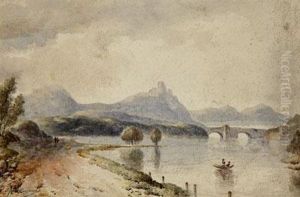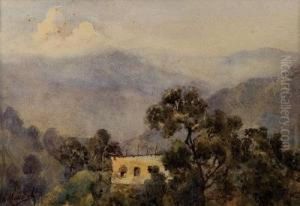Arturo Menocal Paintings
Arturo Menocal was a prominent Cuban artist, born in 1863 in Havana and passing away in 1942. His life and career spanned a period of significant historical events and changes, both within Cuba and in the broader context of the world. Menocal's work and contributions to the art world are particularly noted for their reflection of and impact on Cuban culture and history.
Arturo Menocal's artistic journey began in his early years, showing great promise and talent in the visual arts. His education and development as an artist were marked by his studies in Europe, a common practice among artists of his era seeking to refine their skills and absorb the influences of the European art scene. This experience abroad enriched Menocal's artistic style and perspective, which he would later bring back to Cuba.
Upon returning to Cuba, Menocal became an influential figure in the Cuban art scene. His works often depicted scenes of Cuban life, landscapes, and historical events, capturing the essence of Cuba's natural beauty and its complex social and political tapestry. Menocal's style evolved over the years, incorporating elements of realism and impressionism, and his paintings are characterized by their vivid detail, color, and emotional depth.
Beyond his contributions to painting, Arturo Menocal was also involved in the cultural and educational realms of Cuba. He played a role in the development of artistic institutions and education, mentoring younger generations of Cuban artists and promoting the arts within the country. His legacy is not only in his own artworks but also in his influence on the Cuban art scene and his efforts to elevate the status of art in Cuban society.
Menocal's work has been recognized both in Cuba and internationally, with his paintings held in museums and private collections around the world. Despite the challenges of his time, including political upheaval and changes in Cuba, Menocal's art remained a steadfast celebration of Cuban identity and heritage. His death in 1942 marked the end of an era, but his contributions to Cuban art and culture continue to be celebrated and studied by art historians and enthusiasts alike.

